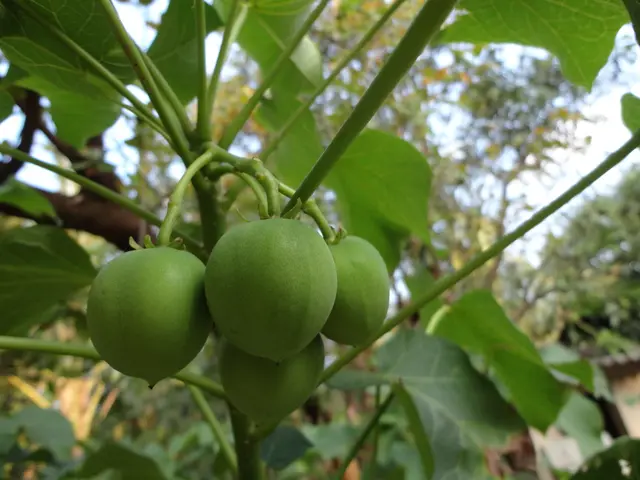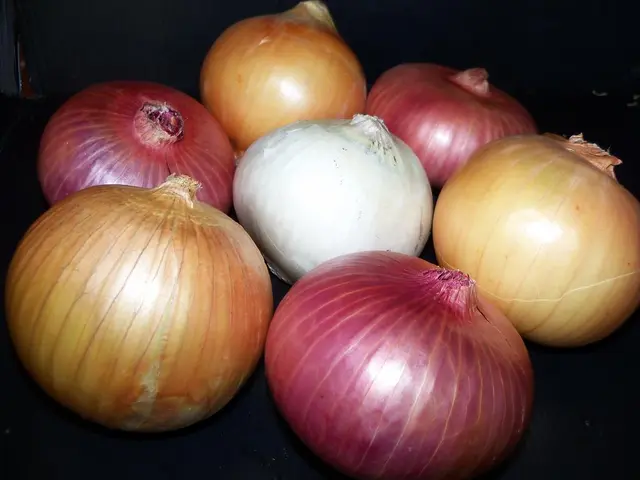Harmful Decorative Additions Luring Container Plants Over Time: 22 Items to Steer Clear Of
Caution in Container Gardening: Harmful Decorations and Materials to Watch Out For
Container gardening offers an opportunity to introduce greenery and personal style to various living spaces. However, not all decorative elements are beneficial for plants as some can subtly harm them over time. Below are some accessories and materials to avoid for a thriving container garden.
- Painted Rocks: While these add vibrant color and character, they often contain chemicals which can seep into the soil, affecting water absorption or introducing toxins to roots. Over time, this stresses the plant and may result in growth problems. Peeling paint may also generate debris that clogs the soil surface. Opt for untreated, natural stones instead.
- Excessive Sphagnum Moss: A small amount of moss aids in moisture retention, but an excessive layer can suffocate the soil, restrict airflow, and lead to soggy conditions, causing root rot. High humidity also encourages mold growth and fungus gnats. Avoid using too much moss and ensure proper drainage.
- Artificial Flowers: While fake flowers can add a charming touch to a pot, densely arranging them may hinder airflow and create damp conditions that attract pests and mold. Their placement may also obstruct sunlight from reaching the plant's base, essential for growth. Over time, dust and moisture build-up on artificial petals, promoting poor hygiene and fungal problems. Opt for a modest number of artificial flowers.
- Seashells: Seashells bring coastal charm but can alter the soil's pH over time. Most container plants prefer a neutral or slightly acidic pH, and crushed shells introduce unwanted alkalinity. Shells can also block even watering and reduce moisture flow into the soil. Choose decorative alternatives or use shells sparingly.
- Dyed Mulch: While dyed mulch is attractive, it may contain harmful dyes and chemicals that can affect soil quality and root health in small pots. Opt for natural, untreated wood mulch for a cleaner, safer option.
- Fairy Garden Figurines: Although tiny gnomes and fairies are adorable, they can compact the soil or limit necessary light and airflow if they're too heavy or cover too much surface area. Moisture collection underneath these figures can also create hidden pest havens. Choose lightweight, well-ventilated decorations placed carefully.
- Mirror Shards: Mirror shards reflect light creatively but can scorch plant leaves and pose risks for children and pets due to sharp edges. Mirror art is best kept away from living plants.
- Beads or Marbles: Colorful fillers like marbles or beads are dense and block water from soaking through to the roots, causing shallow root systems or dry soil underneath. Over time, they may compact the surface, preventing evaporation and encouraging fungal growth. If you prefer the look, place them in a decorative bowl nearby.
- Sand Layers: A top layer of sand appears sleek but crusts when dry, preventing water from reaching lower soil layers effectively. It can also reduce airflow by forming a hardened barrier. Wet sand can attract gnats and harbor mold. Use fine gravel or bark for a breathable top layer instead.
- Clay Pebbles Without Drainage: Clay balls are suitable for hydroponics but can cause problems in traditional containers without proper drainage. In these cases, they retain too much moisture, leading to root rot and fungal problems. Use clay pebbles in self-watering setups or as a small top layer, not as a full base.
- Ceramic Figurines: Heavy and non-porous, ceramic decor can weigh down soil and create dark, damp zones that fungus gnats love. Their weight can compact the potting mix, reducing air pockets roots need. Glazed ceramics may contain lead or other chemicals that leach into moist soil. Choose light, plant-safe materials if you want to include decorative figures.
- Candle Holders: Melted wax remnants or metal residues can be toxic to plants. Soot or leftover scents may also affect soil bacteria and root health. If water pools inside the holder, it creates a breeding ground for mosquitoes or algae. It's better to use clean, non-toxic containers made specifically for plants.
- Plastic Gems: These synthetic stones don't break down and can interfere with soil drainage. Over time, they may leach microplastics into the pot. Their glossy surface can reflect too much sunlight and create hot spots. Plastic gems block airflow and reduce water penetration. Avoid them in plant pots and opt for organic, breathable mulch instead.
By considering the factors discussed above, you will create a beautiful and healthy container garden that allows your plants to thrive while still adding a touch of personality to your living space.
- In a container garden, excessive use of artificial flowers could potentially lead to problems such as poor airflow, damp conditions, and pest infestations.
- To ensure a thriving container garden, it's essential to avoid using dyed mulch as harmful dyes and chemicals can affect soil quality and root health. Natural, untreated wood mulch is a cleaner and safer option.








